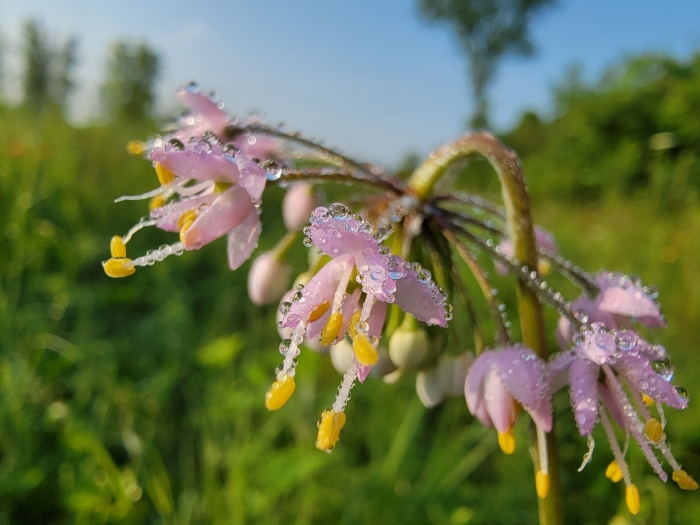Sierra Onion
(Allium obtusum)
Sierra Onion (Allium obtusum)
/
/

Elias
CC BY 4.0
Image By:
Elias
Recorded By:
Copyright:
CC BY 4.0
Copyright Notice:
Photo by: Elias | License Type: CC BY 4.0 | License URL: http://creativecommons.org/licenses/by/4.0/ | Rights Holder: Elias | Publisher: iNaturalist | Date Created: 2021-07-18T08:24:56-07:00 |















Estimated Native Range
Summary
Allium obtusum, commonly known as the Sierra onion or red Sierra onion, is a perennial herb native to the high elevation habitats of the Sierra Nevada and southern Cascade Range, including rocky slopes and alpine meadows in eastern California and western Nevada. It thrives at elevations between 2,600 to 11,500 feet, where it is adapted to the well-drained, granitic soils of these regions. The plant features a bulb typically 0.4 to 0.8 inches wide and a flowering scape that can reach 0.8 to 6.7 inches in height. The flowers of Allium obtusum are particularly showy, with colors ranging from white to purple or pink, each petal marked by a distinct dark purple midvein, blooming in the late spring to early summer months.
The Sierra onion is valued for its ornamental flowers and is often used in rock gardens and alpine collections due to its compact size and attractive coloration. It is also appreciated for its low maintenance requirements, as it is adapted to dry conditions and can tolerate periods of drought once established. In cultivation, it prefers full sun to partial shade and requires well-drained soil to prevent bulb rot. While it is not commonly afflicted by diseases, overwatering can lead to fungal issues. There are two recognized varieties of Allium obtusum, which may vary slightly in flower color and form. This species is not known for aggressive roots or significant pest problems, making it a suitable choice for gardeners looking for a low-care addition to their plantings.CC BY-SA 4.0
The Sierra onion is valued for its ornamental flowers and is often used in rock gardens and alpine collections due to its compact size and attractive coloration. It is also appreciated for its low maintenance requirements, as it is adapted to dry conditions and can tolerate periods of drought once established. In cultivation, it prefers full sun to partial shade and requires well-drained soil to prevent bulb rot. While it is not commonly afflicted by diseases, overwatering can lead to fungal issues. There are two recognized varieties of Allium obtusum, which may vary slightly in flower color and form. This species is not known for aggressive roots or significant pest problems, making it a suitable choice for gardeners looking for a low-care addition to their plantings.CC BY-SA 4.0
Plant Description
- Plant Type: Herb, Bulb
- Height: 0.5-1 feet
- Width: 0.5-1 feet
- Growth Rate: Moderate
- Flower Color: Pink, Purple, White
- Flowering Season: Spring, Summer
- Leaf Retention: Deciduous
Growth Requirements
- Sun: Full Sun, Part Shade
- Water: Low
- Drainage: Medium, Fast
Common Uses
Border Plant, Drought Tolerant, Low Maintenance, Rock Garden
Natural Habitat
High elevation habitats of the Sierra Nevada and southern Cascade Range, including rocky slopes and alpine meadows
Other Names
Common Names: Sierra Onion, Red Sierran Onion, Desert Onion
Scientific Names: , Allium obtusum, Allium concinnum,
GBIF Accepted Name: